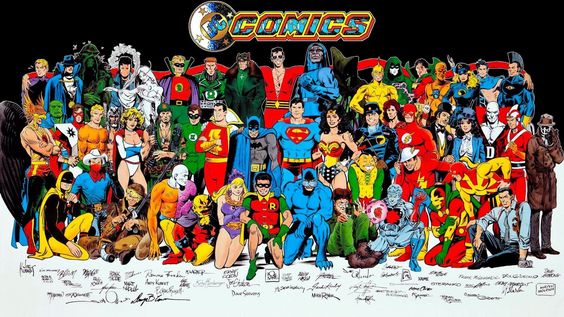The Best DC Events With Too Many Tie-In Comics

In the vast universe of DC comics, crossover events have become a staple, drawing readers into expansive storylines that often change the fabric of the entire comic landscape. These events are notorious not just for their main plots but for their numerous tie-ins across various series. Some fans revel in the intricate web of stories, while others find themselves overwhelmed by the sheer volume of issues they need to follow. Let’s dive into some of the most tie-in-heavy events in DC’s history.
1.Crisis on Infinite Earths (1985-86)
Often considered the grandfather of modern crossovers, “Crisis on Infinite Earths” sought to simplify DC’s convoluted multiverse into a single universe. The event spanned a 12-issue limited series and an impressive number of tie-ins across different titles. It was a groundbreaking affair that would set the bar for all future crossovers in terms of scale and complexity.
2.Infinite Crisis (2005-06)
Two decades later, DC launched “Infinite Crisis,” a direct sequel to the original “Crisis” event. In addition to the seven-issue core miniseries, there were four lead-up six-issue miniseries — “The OMAC Project,” “Rann-Thanagar War,” “Day of Vengeance,” and “Villains United.” Furthermore, there were tie-ins across many regular ongoing series, and even after its conclusion, its effects rippled into subsequent stories.
3.Final Crisis (2008-09)
Grant Morrison’s “Final Crisis” dealt with concepts like the multiverse and Darkseid’s rise to power. While it consisted of only seven central issues, it spread out into multiple specials and mini-series, including “Superman Beyond,” “Rage of the Red Lanterns,” and various one-shots that added depth to this dark narrative.
4.Blackest Night (2009-10)
Taking place in the aftermath of the Sinestro Corps War, “Blackest Night” depicted a universe-wide zombie apocalypse in the DC Universe. With an eight-issue central storyline and over 100 ancillary issues spread across different titles and mini-series like “Blackest Night: Batman,” it was nearly impossible for fans to grab every thread without breaking the bank.
5.Flashpoint (2011)
Although “Flashpoint” itself was confined to a concise five-issue run, it generated over 50 tie-in comics from a broad range of miniseries that explored altered realities where familiar heroes led drastically different lives. This event particularly stands out because it concluded with a monumental reboot—ushering in the New 52 era for DC Comics.
While these crossover events certainly shake things up and bring moments of excitement and grandeur, they can also pose as daunting investments for even loyal fans due to time commitment and financial strain from purchasing numerous tie-in issues. As DC continues to innovate with its storytelling tactics, perhaps future events will find a balance that satisfies both die-hard collectors and casual readers alike.






